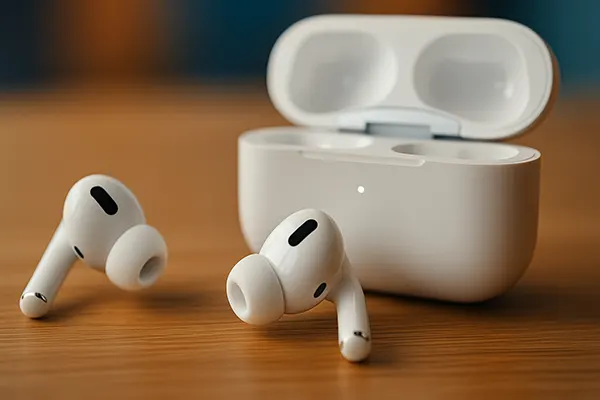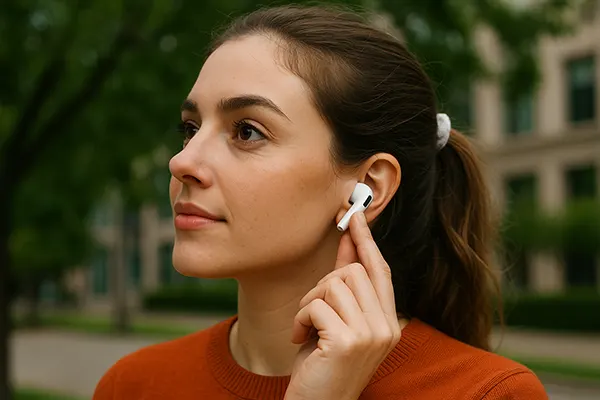AirPods Pro 3: What’s Known About the Next Generation and Its Market Impact

The launch of Apple’s AirPods Pro 3 is one of the most anticipated events in the audio industry for 2025. Following the success of the previous generation, users and analysts expect major upgrades in sound technology, battery life, and intelligent features that could reshape the market for wireless earbuds. Here’s everything we know so far about the upcoming AirPods Pro 3 and how they may influence the competition.
Design Evolution and New Functionalities
According to credible industry sources, Apple aims to refine the AirPods Pro 3 design with a more compact, ergonomic fit. The stems are expected to be shorter or possibly eliminated altogether, enhancing comfort for long listening sessions and sports use. The case will reportedly integrate a Find My speaker for easier tracking and improved water resistance.
One of the most significant changes is the introduction of advanced health monitoring sensors. These could include body temperature and heart rate measurement — aligning with Apple’s broader ecosystem strategy to integrate health data across devices. The addition of such sensors would position the AirPods Pro 3 not only as listening devices but as wellness companions.
Rumours also suggest improved control through touch and gestures, possibly adding haptic feedback for a more natural interaction. Combined with enhanced integration into iOS and visionOS, AirPods Pro 3 are designed to deliver a seamless user experience across Apple devices.
Improved Audio Performance and Noise Cancellation
Apple’s new H3 chip is expected to power the AirPods Pro 3, providing more efficient processing for active noise cancellation and adaptive transparency. These upgrades should result in a noticeable leap in audio clarity and spatial precision, especially in challenging environments such as public transport or crowded areas.
Spatial Audio will be enhanced with personalised sound mapping, using the iPhone’s TrueDepth camera to analyse ear shape for optimal acoustics. Apple has also worked on reducing latency, making the AirPods Pro 3 particularly appealing for gamers and content creators.
Battery performance is predicted to increase by approximately 20%, ensuring up to seven hours of continuous playback with ANC enabled. Wireless charging speeds will also be faster, compatible with both MagSafe and Qi2 standards introduced in late 2024.
Integration with Apple’s Ecosystem
Apple continues to strengthen the bond between its devices, and the AirPods Pro 3 are a testament to this philosophy. With the upcoming iOS 19, users will see tighter synchronisation between AirPods, Apple Watch, and Vision Pro headsets. Switching between devices will become smoother, and the voice isolation features in calls will receive a major upgrade.
The earbuds are expected to work seamlessly with Apple Music’s Lossless Audio, offering studio-grade sound for subscribers. This feature will be possible due to improved bandwidth efficiency and new audio codecs supported by the H3 chip.
Additionally, Apple is planning to use machine learning to adapt audio profiles in real time based on ambient sound and user activity. This technology, combined with Siri’s smarter voice detection, will make daily interactions faster and more natural than ever before.
AI Features and Personalisation
The AirPods Pro 3 are set to become Apple’s most intelligent audio accessory yet. With on-device AI processing, they can automatically adjust volume and EQ settings based on environment and listening habits. For example, the earbuds may recognise that a user is in a noisy street and boost mid-frequencies for clearer speech.
Apple is also introducing “Audio Journaling” — an opt-in feature allowing the system to suggest playlists or soundscapes that reflect a user’s emotional state, similar to features already present in Apple’s Health and Mindfulness apps. Privacy controls will ensure that personal data remains encrypted and processed locally.
Another expected feature is enhanced translation and language detection. Users could receive live translation directly in the earbuds when travelling abroad, powered by the Apple Neural Engine — a potential game-changer for global travellers.

Market Outlook and Competitors’ Response
The introduction of AirPods Pro 3 is likely to push competitors such as Sony, Samsung, and Bose to accelerate innovation. Sony’s WF-1000XM6 and Samsung’s Galaxy Buds 3 Pro are both in development and are expected to focus on matching Apple’s ecosystem integration and AI capabilities.
From a market perspective, analysts forecast that Apple’s share in the premium wireless earbuds segment may exceed 45% in 2025, largely due to the strength of its ecosystem and brand loyalty. The new features in AirPods Pro 3 will likely reinforce this leadership position, attracting both new and existing users.
Moreover, sustainability will play a growing role. Apple has confirmed its commitment to using 100% recycled aluminium and rare earth elements in the AirPods Pro 3, continuing the company’s environmental goals outlined in its 2030 carbon neutrality plan.
Impact on the Audio Technology Industry
The AirPods Pro 3 are not just another upgrade — they represent a broader trend in how wearable technology merges with health, AI, and personalised experiences. By turning earbuds into data-driven smart devices, Apple sets a new benchmark for the industry.
Competitors will need to match not only the sound quality but also the ecosystem intelligence and health-centric functionality. This shift is expected to redefine what users expect from premium headphones, moving from passive listening to active assistance in daily life.
In essence, the AirPods Pro 3 could mark the beginning of a new era in personal audio — one where comfort, intelligence, and wellbeing coexist in a single pair of earbuds. Their success will likely influence hardware development across the entire consumer tech landscape in the years to come.
